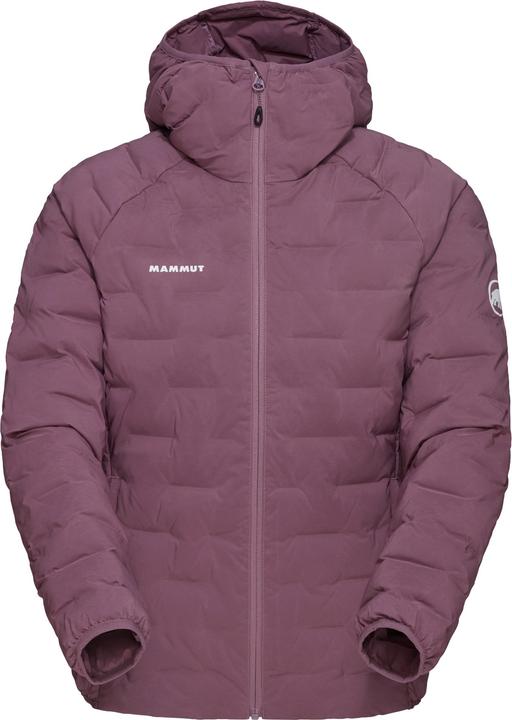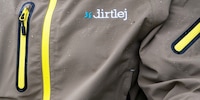
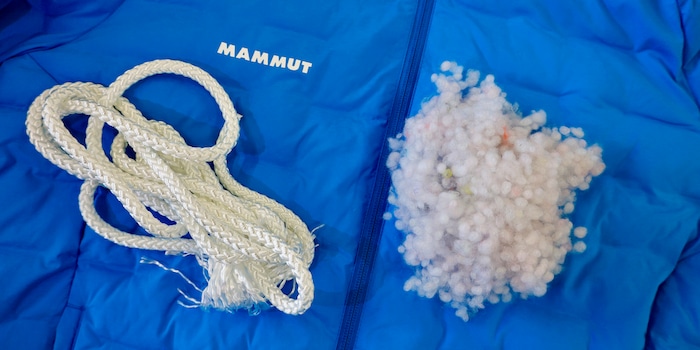
Mammut’s new jackets contain scraps of rope to keep you warm
Some ideas make intuitive sense, but aren’t easy to turn into reality. That’s certainly how it was for mountain sports outfitter Mammut when it opted to start insulating jackets with discarded rope. But unwilling to throw in the towel, the product developers toiled away for six years to find a solution. Now, the first jackets and vests containing the company’s new «Loopinsulation» have hit the shelves.
Ropes hold a special significance for Mammut. In fact, when the company was founded in 1862, it was actually a rope maker. Avalanche transceivers, outdoor clothing and gear weren’t added to its product portfolio until later on. When a carbon footprint analysis conducted six years ago revealed that ropes, of all things, accounted for 13 per cent of the company’s CO₂ emissions, it was time to do something about it. Despite the fact Mammut had sold its rope business to Austrian rope manufacturer Teufelberger in 2015.
A good idea ushers in new challenges
Mammut’s initial idea was to use climbing ropes to make T-shirts. And the initiative proved to be a success. In 2020, Mammut began selling its first Loop T-shirts made of old ropes belonging to individual customers and climbing gyms. But the product developers weren’t fully satisfied. The fibres used in the T-shirts had to be prepared with chemicals, although the goal had actually been to make the ropes recyclable mechanically, i.e. via shredding. This would’ve kept the environmental impact as low as possible.
After numerous tests and a lot of rethinking, it became clear that recycling dynamic (stretchable) ropes, like the ones used for climbing, isn’t yet feasible without chemicals. As a result, the developers at Mammut went looking for other options.
Static ropes for sailing and construction lead to progress
«Alongside rope manufacturer Teufelberger, whom we work with closely, we came up with an idea,» says textile engineer Helena Pérez Pastor in an interview at Mammut’s Seon outlet. Teufelberger, which has been manufacturing climbing ropes for Mammut since taking over that part of the business, produces large quantities of waste from industrial and sailing ropes. «They’re unused rope scraps, fresh from the factory,» explains Product Manager Susanne Leutner.
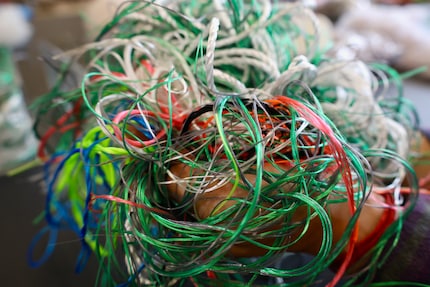
Source: Siri Schubert
The deciding factor was that the scraps were made of polyester, allowing them to be processed mechanically. When they’re shredded, they form fine fibres with a certain fluffiness – a key characteristic of insulation material used in outdoor clothing.

Source: Siri Schubert
«That was step one,» says Helena, «but the recycling process is pretty complex, and it posed a whole host of challenges for us.» One of these challenges was variation in rope thickness. After all, as Helena points out, mechanically recycling industrial ropes to make jacket insulation had never been done before.
Warm, recyclable insulation
To get the right insulation and make sure the material inside the jackets is well distributed and doesn’t clump, you need to add other fibres. This prompted Mammut to opt for a 50:50 fabric made from recycled ropes and plastic bottles.
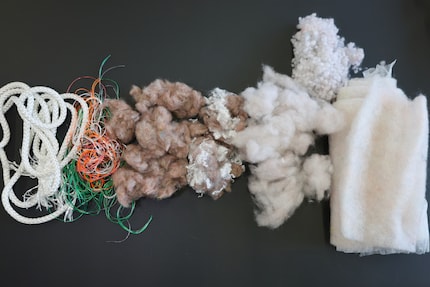
Source: Siri Schubert
Mammut had the jackets tested by professionals at Hohenstein in Germany to confirm that they retained warmth and met high insulation standards. Of course, the amount of insulation used and the purpose of the jacket always factor into the equation. «We didn’t set out to make the warmest jacket on the market. Our goal was to create a jacket that performs just as well with recycled materials as with new ones,» explains textile engineer Helena.
Mammut says its Sender IN Hooded Jacket keeps you warm even in sub-zero temperatures. Meanwhile, even thicker jackets are already in the pipeline. In order to make sure the insulation material itself is also recyclable, Mammut doesn’t use the adhesive typically found in polyester insulation. According to the specs, the water-repellent exterior of the jacket is PFC-free, meaning it isn’t made using harmful fluorocarbons.
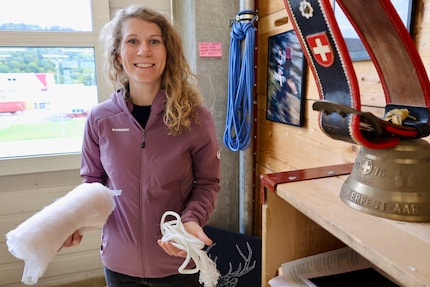
Research efforts still ongoing
Despite their initial progress, the product developers are still looking at ways to reduce the amount of chemicals added to the jacket in future. They’re also keen to figure out how to recycle climbing ropes. «We aren’t yet where we’d ultimately like to be, but we’ve taken a few steps in the right direction,» says Helena.
Mammut’s already recycled 12 tonnes of rope scrap for its 2024 autumn/winter collection. Wondering why the jackets look familiar? Instead of designing a completely new collection, Mammut has replaced the inside of its existing jackets with the more environmentally friendly insulation.
If you’re interested to know how the jackets fare in practice, follow me to read my upcoming product review. It’ll be published here in the next few weeks.
Research diver, outdoor guide and SUP instructor – I love being in, on and around water. Lakes, rivers and the ocean are my playgrounds. For a change of perspective, I look at the world from above while trail running or flying drones.
Interesting facts about products, behind-the-scenes looks at manufacturers and deep-dives on interesting people.
Show all